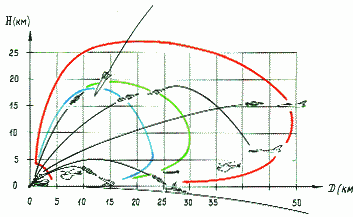WeeBee
New Member
Hello,
Like many of you I have spent some time behind my computer the last 3 weeks, in search of any information objective enough to be deemed trustworthy. My work ethos is following a line of logical thinking, provided by factual information. I hold a Master's degree in behavioural research. I am close to someone that lost both her aunt and uncle in flight MH17.
One analysis that I had not seen until today, which I found on Reddit is located here: https://docs.google.com/file/d/0ByibNV3SiUoobnpCVDduaHVORHM/view?sle=true
From what I can gather, it seems the author does not agree with other information on the possible location of a BUK-M1 launcher south of Snizhne that could have brought down flight MH17.
I am having difficulties with following the line of reasoning in the analysis, so I would be very grateful if someone could help me with the following:
To answer the question of impact location we can not rely on 1) auditory information or 2) visual information. One way of pinpointing this location is by knowing the exact location of loss of radar contact. However, this requires an answer on the following questions to assertain loss of radar contact as an accurate and valid measure of missile impact location:
I hope you guys can help answer these questions and provide further re-analysis of this data.
Thank you.
Like many of you I have spent some time behind my computer the last 3 weeks, in search of any information objective enough to be deemed trustworthy. My work ethos is following a line of logical thinking, provided by factual information. I hold a Master's degree in behavioural research. I am close to someone that lost both her aunt and uncle in flight MH17.
One analysis that I had not seen until today, which I found on Reddit is located here: https://docs.google.com/file/d/0ByibNV3SiUoobnpCVDduaHVORHM/view?sle=true
From what I can gather, it seems the author does not agree with other information on the possible location of a BUK-M1 launcher south of Snizhne that could have brought down flight MH17.
I am having difficulties with following the line of reasoning in the analysis, so I would be very grateful if someone could help me with the following:
- The location of impact of the missile with MH17 seems to be crucial in the analysis, as this location ultimately excludes the possibility of a BUK-M1 launcher south of Snizhne
To answer the question of impact location we can not rely on 1) auditory information or 2) visual information. One way of pinpointing this location is by knowing the exact location of loss of radar contact. However, this requires an answer on the following questions to assertain loss of radar contact as an accurate and valid measure of missile impact location:
- How often does the airplane collect radar position data?
- How often does the black box send out this data to the Ukrainian Air Traffic Control?
- How long is the delay of information relay to the UATC (i.e. how far could MH17 have travelled before the data of the last know location is obtained by the UATC)?
I hope you guys can help answer these questions and provide further re-analysis of this data.
Thank you.
Attachments
Last edited:





